Top 12 Most Valuable $2 Dollar Bill Worth Money (Rarest List)
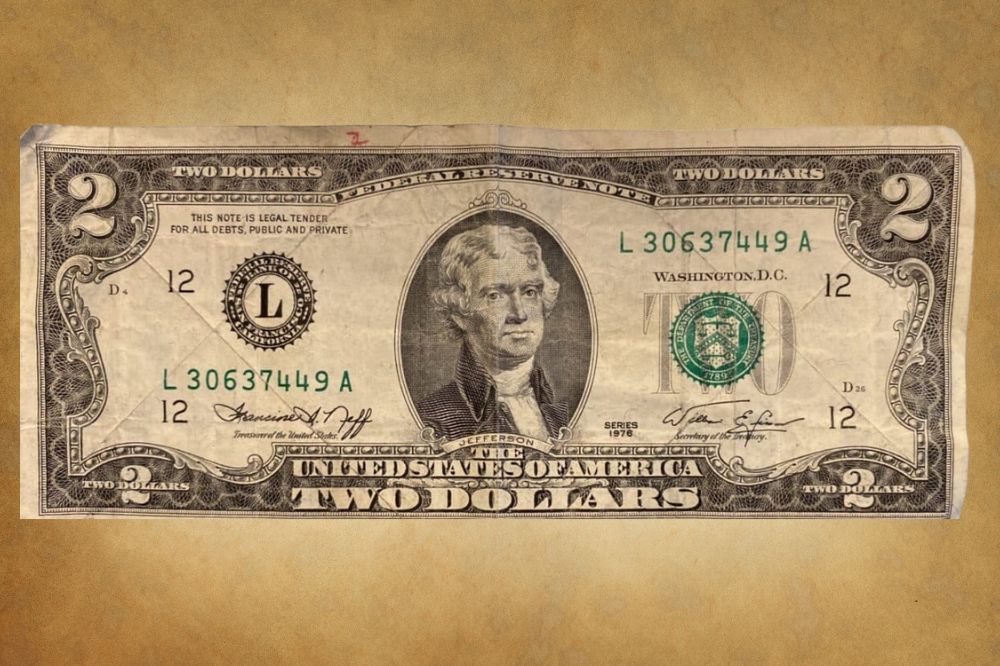
Do you wonder whether your two-dollar bill is worth more than its face value?
If you have an old $2 bill, you are probably curious how much it is worth today.
Given its interesting and sometimes controversial history, people have a love-hate relationship with the two-dollar bill.
Most two dollar notes are not worth much, and you might be better off collecting other currencies. That said, some rare $2 bank notes can fetch hundreds if not thousands of dollars!
Read on as we reveal an exhaustive list of the most valuable 2 dollar bills worth money!
History of the Two Dollar Bill
The United States Mint printed the first $2 bills in 1862, issuing them as United States Notes. These early bills featured a portrait of Alexander Hamilton, our country’s first Secretary of Treasury and one of the Founding Fathers. On the reverse was a depiction of John Trumbull’s 1818 painting of the site of the Declaration of Independence.
The Treasury redesigned the two-dollar United States bill in 1869 to feature a portrait of Thomas Jefferson on the obverse. There is also a portrait of the United States Capitol at the center of the bill.
The note underwent various design changes over the years, including changes to the tinting, reverse design, legend and serial numbers.
Aside from being issued as United States Notes, two-dollar bills were issued as National Bank Notes beginning in 1875. These bills featured a wide, sideways number two, known as the Lazy Duce and a lady holding a flag on the obverse. The reverse of the National Bank Notes showed the King of England puffing away a tobacco pipe and the image of an eagle with a shield.
In 1890, the two-dollar bill saw new changes. The Treasury began issuing these notes as $2 Silver Certificates showing a portrait of William Windom, the U.S. Treasury Secretary. Silver Certificates were printed to facilitate the purchase of silver bullion from silver miners. The Treasury adjusted the original reverse design of the Silver Certificates, making it harder to counterfeit these bills.
The popular Educational Series of the $2 Silver Certificate was introduced in 1896, and by 1918, the Mint began issuing $2 bills in Federal Reserve Bank Notes. These were the last large-sized two-dollar bill notes and were replaced by smaller-sized notes in 1928.
The new small-sized $2 bill notes were only issued as United States note featuring Thomas Jefferson’s portrait on the obverse and his home, also known as Monticello, on the reverse. The Treasury began reducing the production of $2 bills in the 1950s, and the subsequent scarcity led to hoarding these bills.
The last significant change to the United States $2 bill occurred in 1963 when the Treasury added the country’s motto, IN GOD WE TRUST, on the reverse over Jefferson’s house. By 1966, the Treasury discontinued the production of the $2 and $5 United States notes, but these bills are still legal tender to date.
But, the Treasury began reissuing $2 notes in 1976, the United States Bicentennial year. About 590, 720,000 $2 notes were printed in 1976, and production of these notes continues to date, albeit in low mintages.
Due to the low mintage and the fact that the $2 bills do not circulate widely, people wrongly assume that these notes are rare, high-value, or not legal tender. The truth is $2 bills are legal tender, but they are neither rare nor extremely valuable, although there are a few exceptions, which we will explore below.
The Most Valuable Two Dollar Bills
Let’s now explore the rare two-dollar bills worth money. We will categorize them into:
- United States Notes
- Treasury Notes
- National Bank or Federal Reserve Bank Notes
- Silver Certificates
1. 1880 $2 United States Note
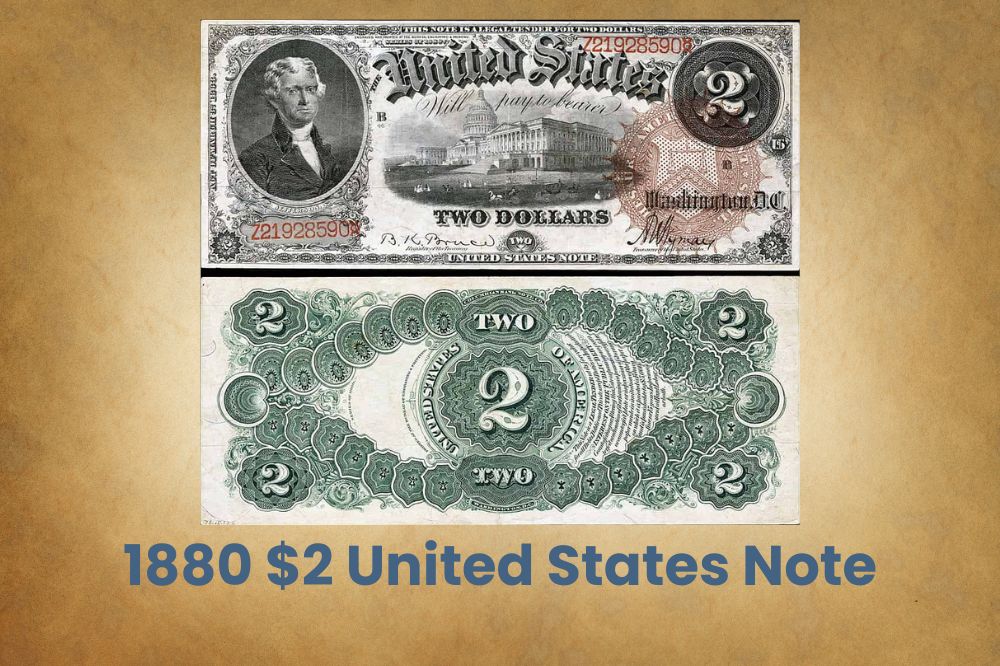
The 1880 two-dollar United States Note may not be the most artistically attractive, but it is still very collectible. In particular, those with a large red seal and blue serial numbers are rare and worth good money.
These notes feature Thoman Jefferson’s portrait on the obverse with the Capitol building in the center. An 1880 $2 United States Note is worth about $100 in circulated condition, but this old bill will fetch as much as $350 in uncirculated condition.
2. 1875 B $2 United States Note
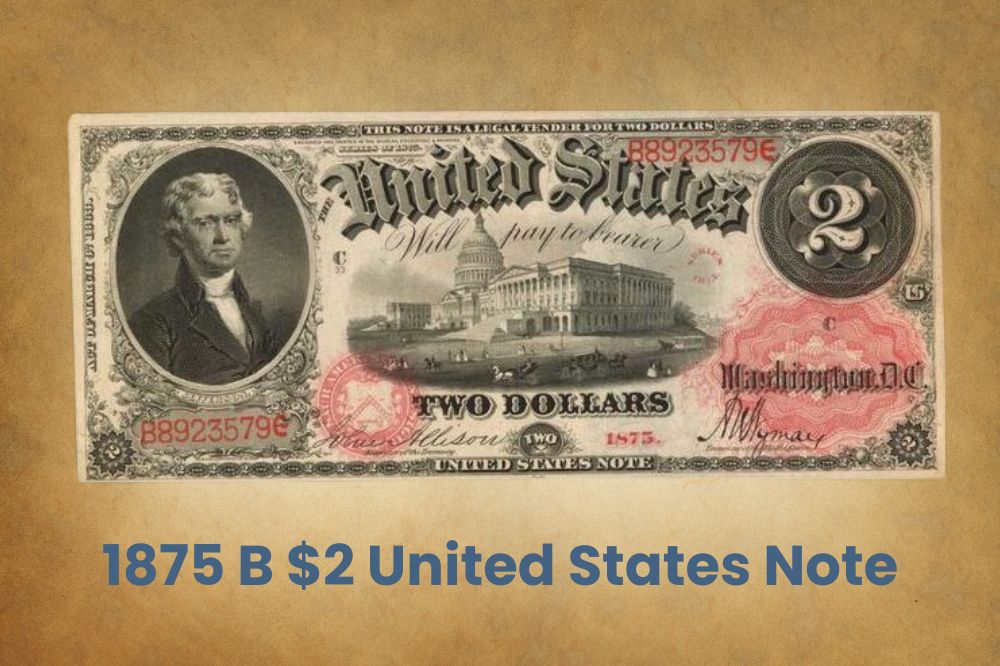
The 1875 two-dollar bill features a large “2” at the top of the note, earning it the nickname Lazy Deuce. This note has a unique design, making it quite popular among collectors.
It is also worth remembering that not all $2 bills with the date 1875 were printed that year; a print run of these $2 notes lasted for 15 years before being discontinued.
The most expensive $2 1875 $2 United States Note fetched a whopping $52,800. In circulated condition, collectors pay about $450 for the 1874 two-dollar bill and up to $1,100 for an uncirculated note.
3. 1874 $2 United States Note
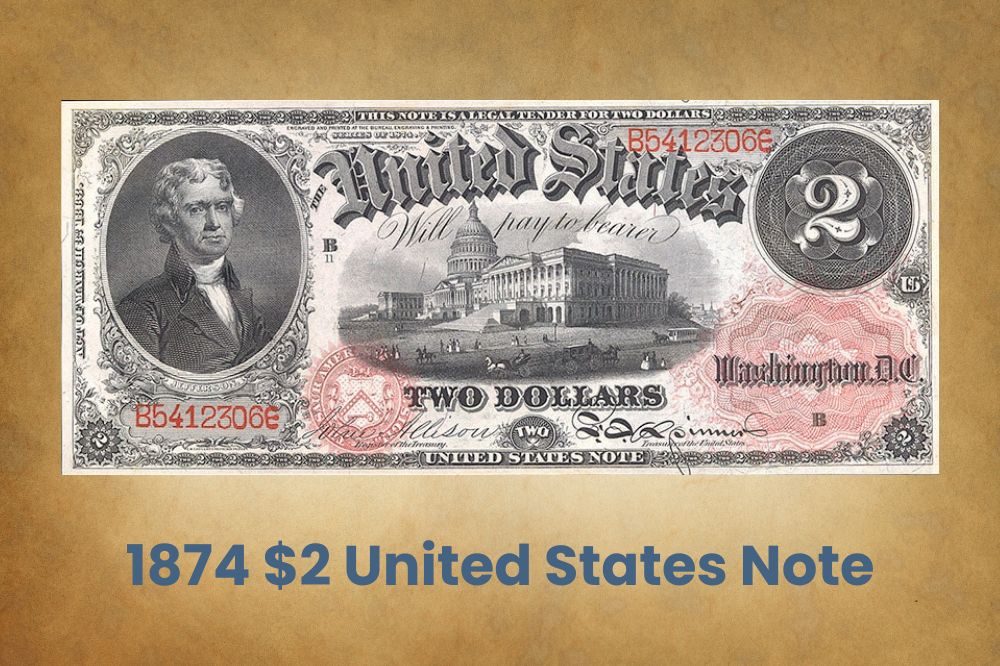
The 1874 $2 bill was part of the Lazy Deuce series and is quite uncommon today, given that it is old.
The issuing bank largely determines the value of your 1984 $2 note. Bills issued by common chartered banks are less expensive than those from rare or popular state banks.
As a collectible one-year bill, 1874 $2 is worth about $500 in uncirculated condition, but this value can increase to $5,000 or more in uncirculated condition and depending on the bank of issue.
4. 1862 $2 United States Note
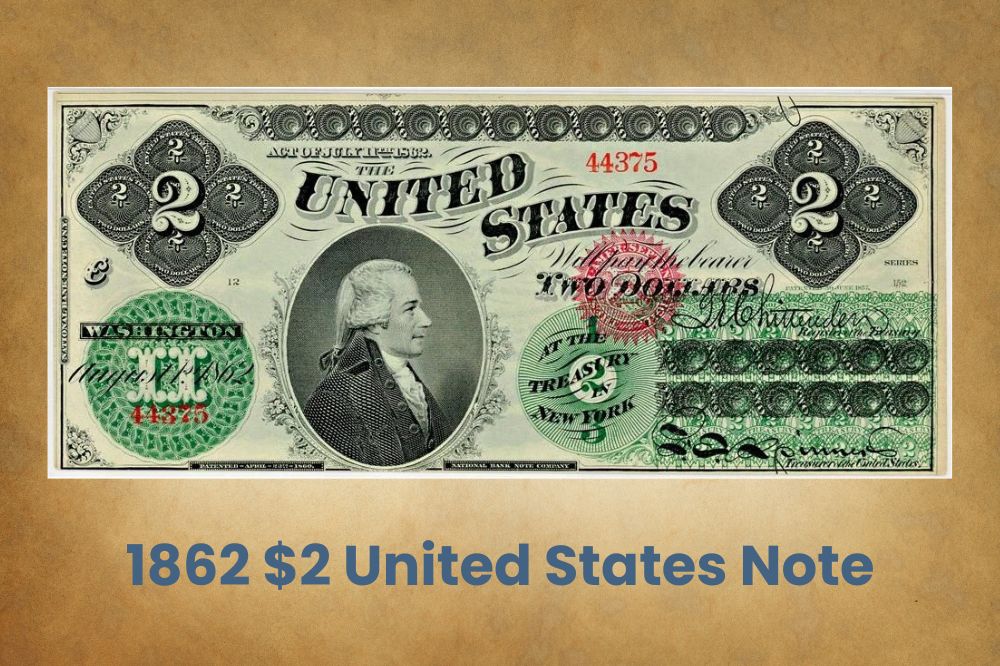
The 1862 two dollar bills feature Alexander Hamilton’s portrait at the center. These notes are dated 1862 and 1863, but collectors generally refer to them as the 1862 series.
All the 1862 $2 bills were printed by the National Bank Note Company and the American Bank Note Company, and although these prints are considered different, they are worth the same. Spinner and Chittenden also signed all of the 1862 series $2 bills.
Beware that being the first $2 bill, this currency is sometimes counterfeited, so you should be cautious, especially of worn-out bills.
On average, a circulated 1862 two dollar bill is worth $300, while the rare uncirculated examples will sell for as much as $2500.
5. 1869 $2 United States Note
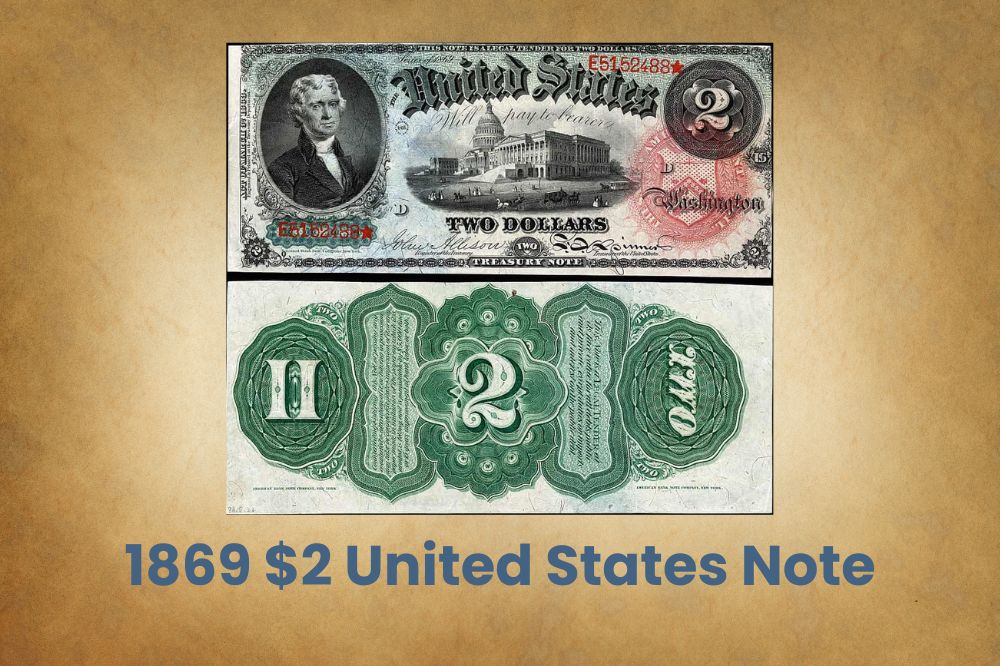
The 1869 $2 bill is part of the Lazy Duece series, which ran from 1863 to 1878.
This note features the image of Thomas Jefferson on the left and the Capital Building at the center, and of course, the sideways ‘2’ taking up the majority of the bill.
The bill also shows a large red seal on the obverse and a read string of serial numbers. Expect to pay at least $600 for an 1869 $2 bill in circulated condition and about $3,500 for an uncirculated example.
6. 1928 B $2 United States Note
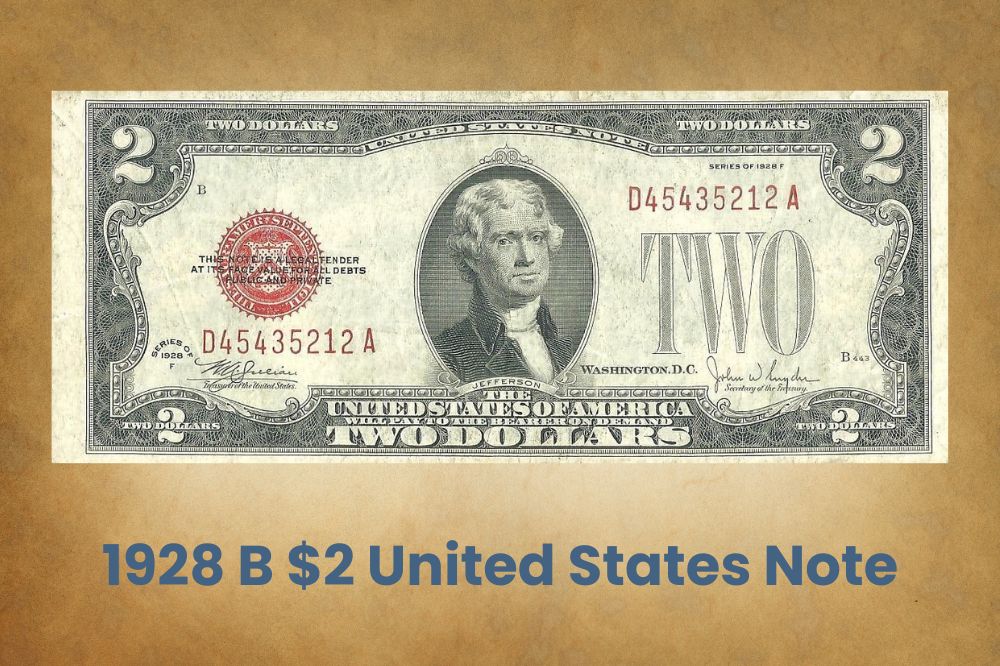
The Treasury issued eight varieties of the 1928 $2 bill, but the 1928 B Star is the most valuable in the series.
Like the rest in the series, the 1928 two dollar bill features a red seal and serial numbers. But, you will also notice a star at the start of both serial numbers in some two dollar bills dated 1928. These are known as 1928 B star notes.
Consider yourself lucky if you can find one of these rare star notes; fewer than a dozen examples are known to exist today. In circulated condition, a 1928 B star $2 bill is worth between $1,000 and $2,500, but it can fetch as much as $7,500 in circulated condition.
7. 1890 $2 Treasury Note
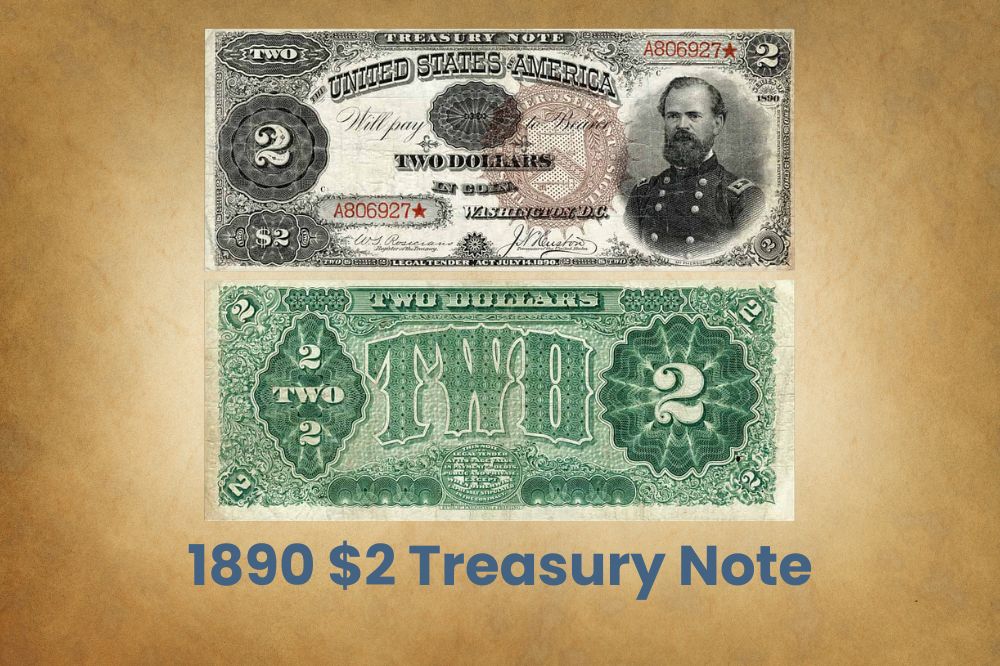
The Treasury issued the Treasury Note between 1890 and 1893 as representative money.
Also known as coin notes, the government used treasury notes to buy silver from silver miners, as authorized by the Sherman Silver Purchase Act.
The 1890 $2 notes are best-sellers circulated or uncirculated as the first series of treasury notes. Collectors will pay as much as $2,000 for circulated examples and more than $4,500 for rare, uncirculated $2 bills.
8. 1896 $2 Silver Certificate
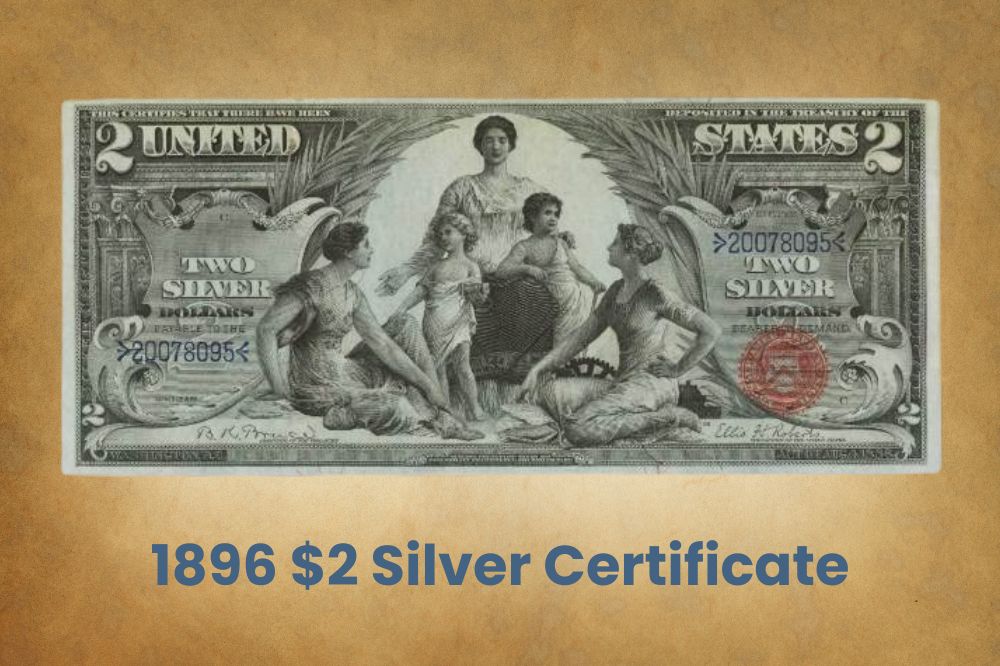
The 1896 $2 silver certificate is popular for its attractive design and for being the first date of issue for the silver certificates.
The bill’s design, featuring three females teaching two young children, was painted by a popular muralist named Edwin Blashfield. On the reverse, the note features the portraits of Breese Morse and Robert Fulton, two accomplished inventors.
Prices for circulated 1896 $2 silver certificates start at $200, while uncirculated certificates can fetch between $3,500 and $5,000 or more, depending on the condition.
9. 1891 $2 Silver Certificate
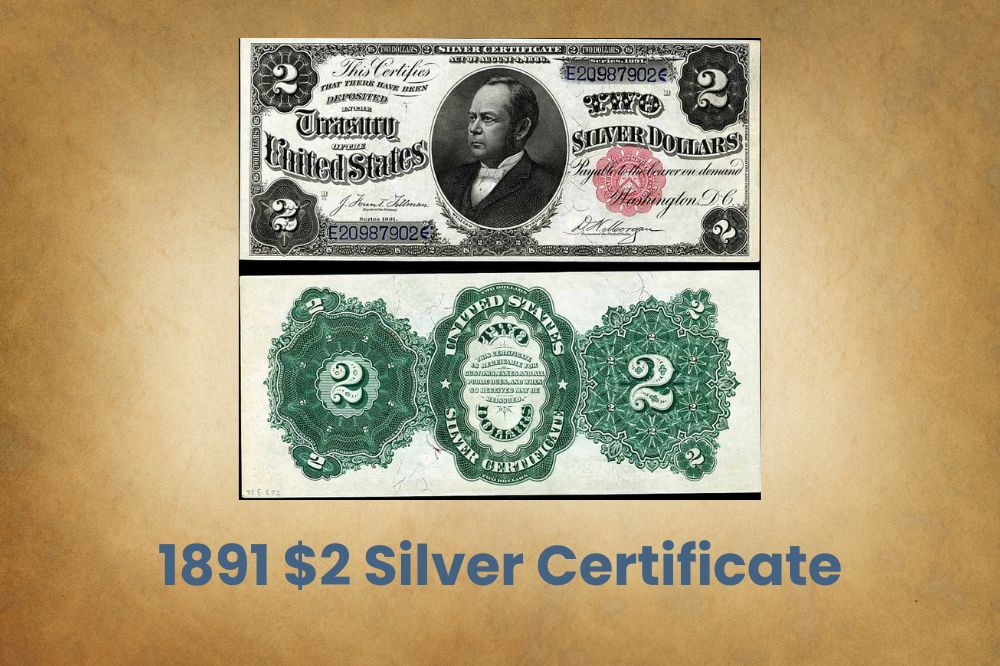
The 1891 $2 silver certificate is also known as the Windom as it features William Windom’s portrait.
These notes have a blue string of blue serial numbers and a red seal on the right site. The bills have two different signature varieties, although the signatures do not affect the bill’s value. Nebeker and Rosecrans signed the early 1891 $2 silver notes, and Tillman and Morgan signed the subsequent issues.
Although not popular, the 1891 $2 silver certificate is necessary for those looking to complete a $2 silver certificate collection. These bills are worth about $150 in circulated condition, but the price can increase to $3,000 for rare bills in mint state and $10,000 for gem quality bills.
10. 1891 $2 Treasury Note
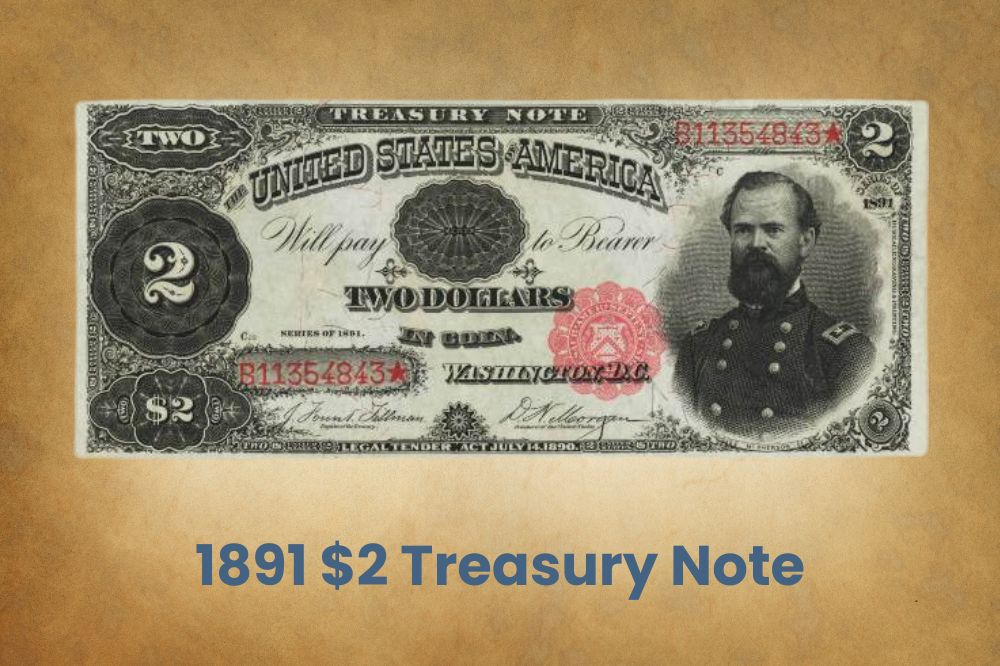
The 1981 $2 treasury note boasts a low mintage, making it scarce and, therefore, a little pricey, especially in higher grades.
The note features General James McPherson and is therefore nicknamed McPhersons in numismatic circles. McPherson was the only Union Army Commender to die in battle and the second highest-ranking officer of the Army to die in the Civil War.
Whether buying or selling, expect about $200 for a circulated $1891 $2 treasury note and anything between $1,000 and $3,500 for the same bills in uncirculated condition.
11. 1890 $2 Treasury Note
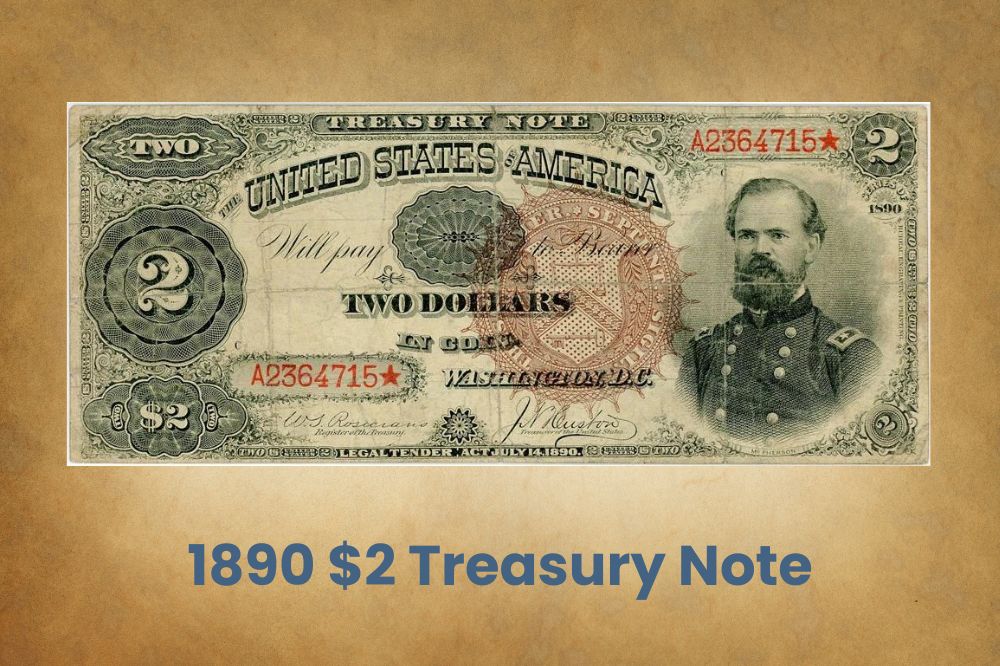
The U.S. government issued treasury notes in 1890 and 1891. Both bills spot the same design featuring General James McPherson on the obverse.
The series 1890 treasury notes are not necessarily popular, but the $2 bill is highly collectible and valuable. Although the serial number on the 1890 $2 treasury note ends with a astar, it is the low serial number that really adds value to this bill.
It is also worthwhile noting that the 1890 $2 treasury note has three signature combinations. The one signed by Rosecrans and Nebeker and featuring a brown seal is the most valuable in an uncirculated mint state. The other two varieties include the Rosecran and Huston brown seal and the Rosecrans and Nebseker read seal.
12. 1918 $2 National Bank Note
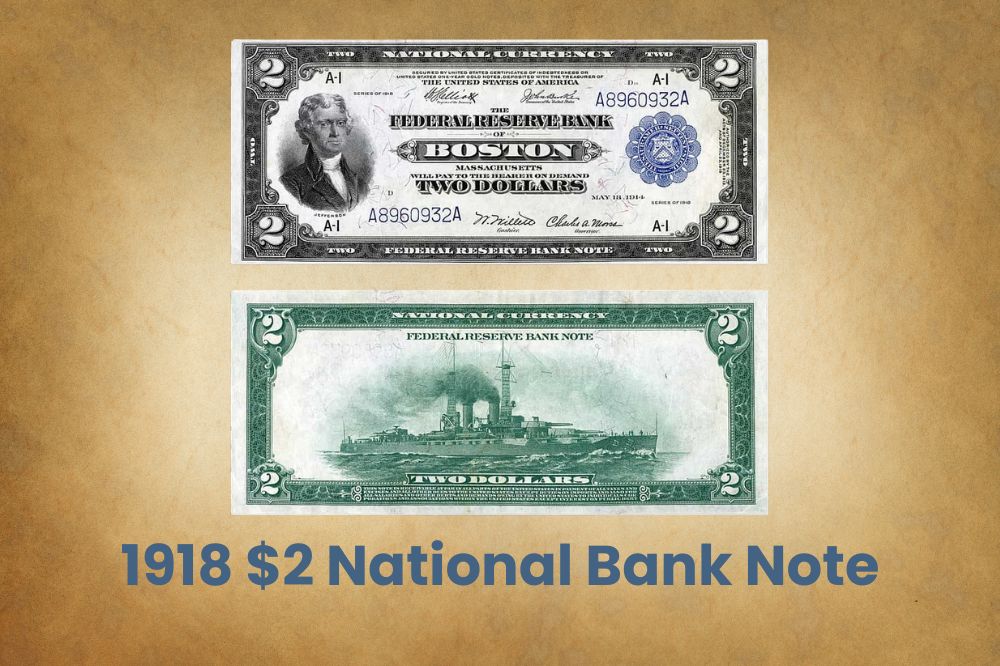
The United States government issued the last large size two dollar bills in 1918. All twelve federal reserve banks issued the $2 bill in 1918.
The 1918 $2 bill is commonly known as a ‘’battleship’’ a name derived from the image of a battleship on the bill’s reverse. For some reason, the battleship appeals to many collectors, making the $2 national bank note quite popular.
The $2 bill from 1918 is a good example of the effect of low serial numbers on the value. There are hundreds of examples of 1918 $2 national bank notes with serial numbers below 1000 and others below 100, most of which are uncirculated.
Uncirculated 1918 $2 national bank notes are worth at least $2,000 or more, depending on the bill’s condition. Circulated examples are still valuable, with those graded between fine and extremely fine fetching as much as $200 on the lower side.

I have 2 legal tender series 1953 bills with the red stamps on of them is a d3 serial # A12671203A .and in his picture he also has a red.mark . I also have a 5 dollar legal tender series 1934 d federal reserved H serial number h83639042
A with the number 8 on it in green